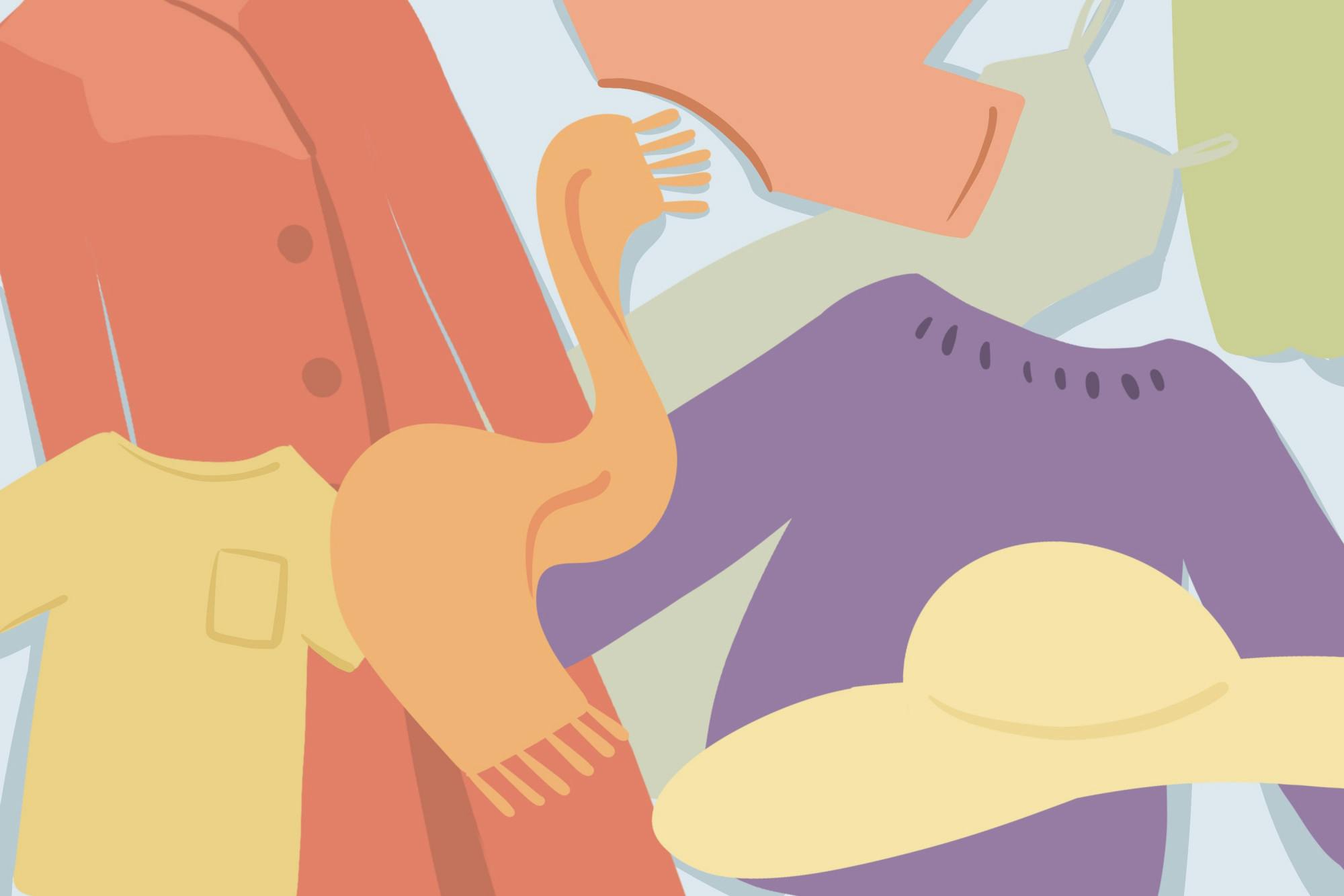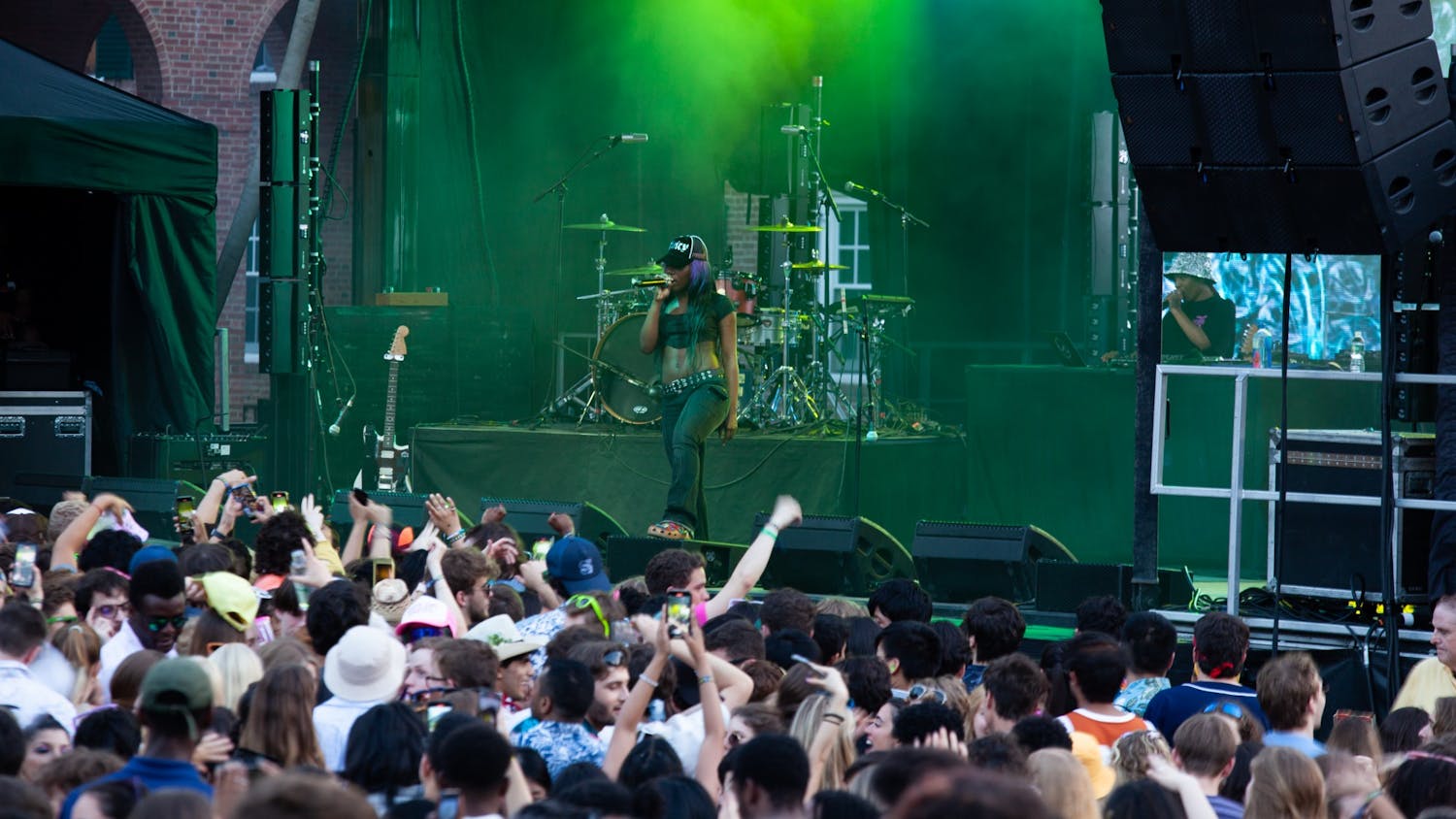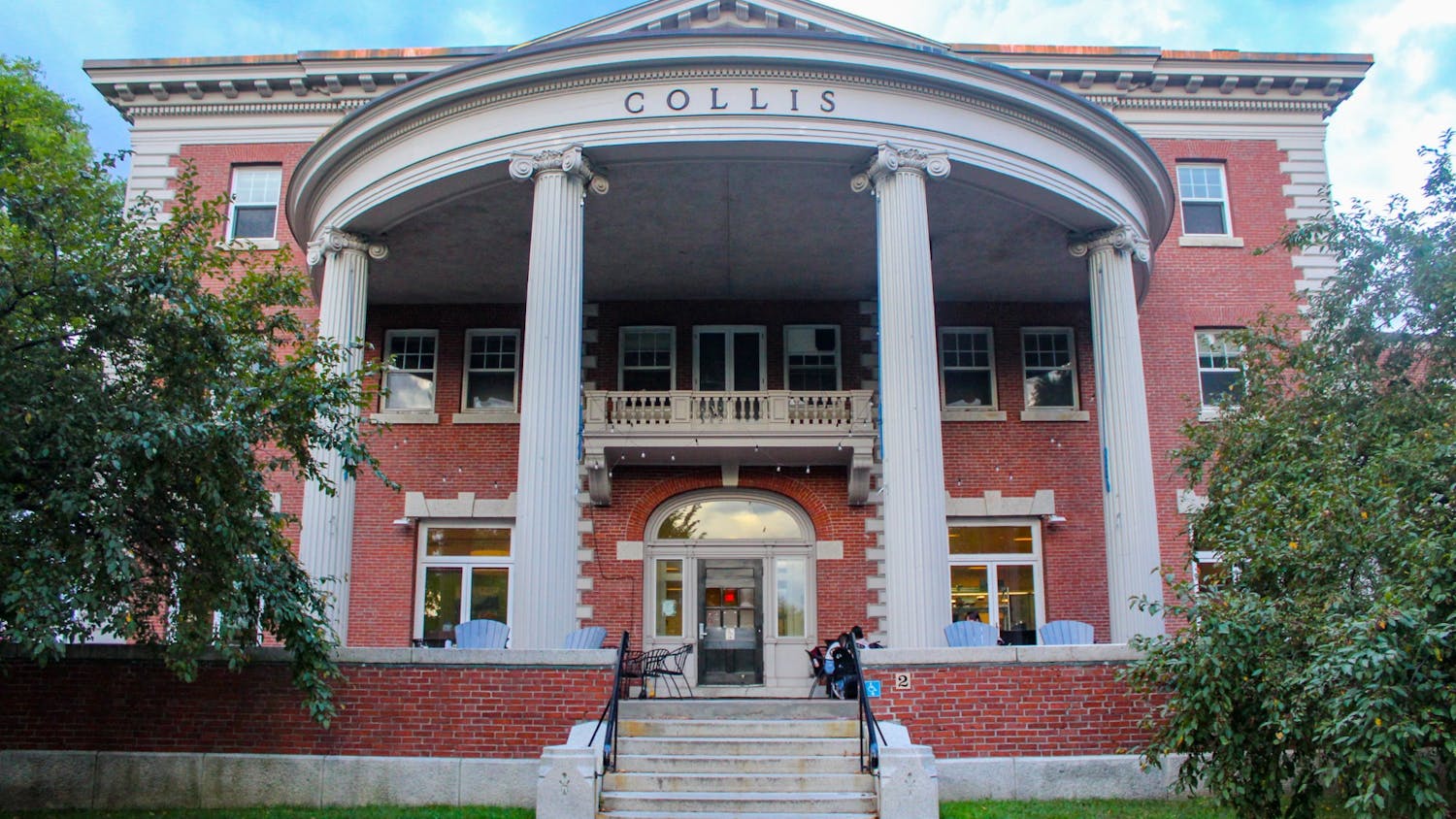There’s an age-old saying on many college campuses: You can spot a freshman. What’s true of the freshmen also applies to those who will soon leave us here at Dartmouth — the seniors. While some ’26s sport shiny new sneakers, crisp clothing and an air of naïvete, seniors can often be identified by their personalized style. They’ve spent four years on this campus growing into their own, and many of their styles reflect their growth and upperclassman confidence.
To get a closer look at this phenomenon, I took to the streets (well, Collis Center porch and Bones Gate fraternity) to question three seniors about how their style has shifted and evolved throughout their years here at Dartmouth.
In front of Collis, I found Sevie Browne ’23 and Emily Henrich ’23 lounging on a hot Saturday afternoon. Browne sported blue and green flowered Patagonia shorts, also known as Baggies, and a punchy graphic tee. Henrich also wore a dark tee shirt and shorts in the heat.
Henrich first mentioned that her style shifts often out of necessity — she’s a student-athlete, and thus spends “a lot of [her] time in Dartmouth-issued athletic gear.” At times when she’s not dressed for rugby practice or in uniform with her team, she said she finds an outlet for self-expression through her outfits.
Browne mentioned how freedom of dress on a college campus has allowed her to lean into her own style, which is now starkly different from what she wore during her high school days. Browne reminisced, “We had a really strict dress code, where I had to wear a blazer and a button down every day … [I] definitely wasn’t able to really explore my own personal style.”
Similarly, Nicolas Audisio ’23 talked about his experience and style experimentation at Dartmouth. I interviewed him in his room in BG, where the walls were covered with bright colored stop signs and memorabilia, and his futon had a multicolored striped blanket. A wooden sword, with two bones carved into the handle, hung above our heads.
As Audisio reclined, I noted his outfit: a crisp floral camp-collar shirt and a cuffed pair of navy chinos.
Audisio’s style transition from high school to college was starkly different from Browne’s, but he noted some of the same hallmarks of Dartmouth style culture that she did.
He did, however, note that “kids dress differently here than in my public high school,” perhaps due to differences in trends and culture in Hanover versus in Miami.
Browne and Henrich noted that some distinct Dartmouth style elements include preppiness and brand name culture. The pair zeroed in on some of the biggest brands that circulate around Hanover such as Patagonia and Canada Goose.
Henrich reflected on her style evolution and relationship with brand names, especially from freshman to senior year.
“[As a senior], I care much less about the name brands of clothes … you go through [an] exploration processes,” she said.
Browne agreed that some Dartmouth students put weight on name brand clothing, adding “that people like to wear expensive name brands because it shows that you can pay for an expensive name brand.”
Browne said she found nuance in the popularity of certain items at school, because on the other hand, some “things are popular because they’re accessible.” Mainstream clothing here flows and functions both ways — sometimes as a status symbol and sometimes as a point of connection.
Audisio noted how much of his clothing isn’t brand-name, but branded — more specifically, his clothing items are marked with the names of generations of Bones Gate members and Dartmouth Rugby Football Club players that came before him.
When I asked Audisio about his favorite pieces seen around campus, he couldn’t respond with just a single item, but rather said, “I think it’s all the bequests, everything that gets passed down at this school.”
Bequests are items, often clothing, that get passed down from graduating seniors to other members of an organization. Some might be two years old, while others have been around for decades. Sororities and fraternities organize these bequests, as well as sports teams, performance clubs and other extracurricular groups. If it’s a group on campus that meets in any capacity, they are bound to have a bequest tradition.
As I walked by the Bones Gate backyard, I saw a group of 15 or so people sitting in shade and passing around fluffy and colorful items as seniors went up to give speeches with teary eyes. Although it took me a second, I realized I had stumbled across a bequest ceremony right in front of my eyes. The last week of spring at Dartmouth is, of course, bequesting season.
Audisio noted that he had some items of his own to bequest. He pointed out a thick leather jacket in his closet. He said he had thought about keeping it, as seniors sometimes keep “one [bequest] per organization,” but ultimately decided that he would pass it down to another Bones Gate brother.
Henrich and Browne also listed bequests as “the coolest thing” that contributes to style on Dartmouth’s campus. Henrich said she has many “old rugby jerseys” that have been passed down for decades. Browne listed her favorite bequest as a “shirt from 1975 Homecoming that says ‘Burn the House Down,’” accentuated with an image of the fire.
So what sets these seniors’ styles apart? Have they simply accumulated the biggest, best bequests? Have they settled into a sense of ease and confidence? Did they “find themselves” during college? The answer is seemingly all of the above — more or less — but that doesn’t mean you’re totally out of luck if you haven’t quite found your style.
“I generally try to not even think too much about what people are wearing,” Audisio said.
Henrich likewise said that although she sees her style as a form of self-expression, she “doesn’t attach it to her personality that much.”
So put on what you want and don’t overthink it — then, you’ll dress with senior style.




